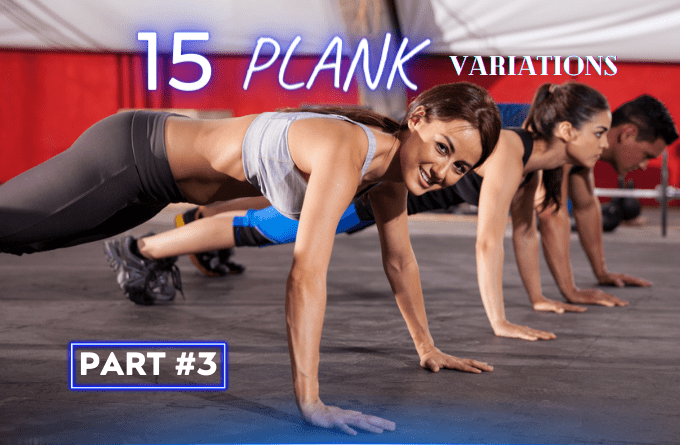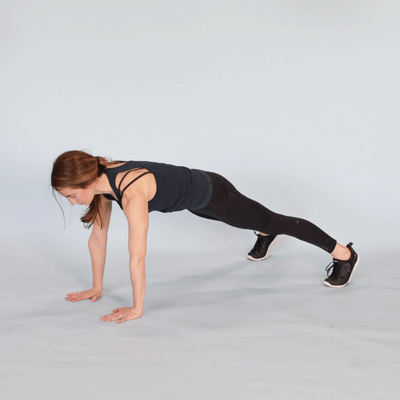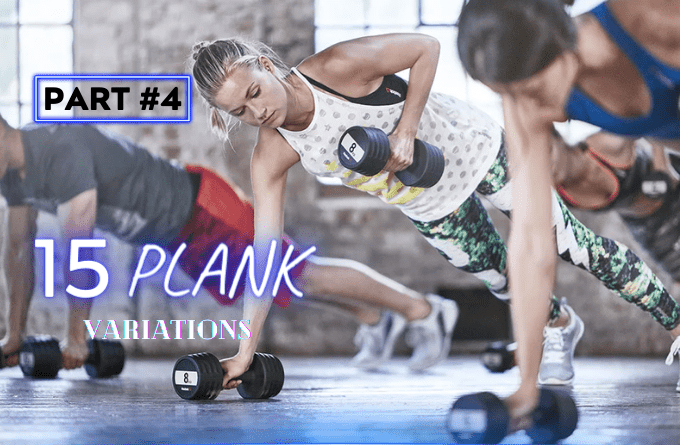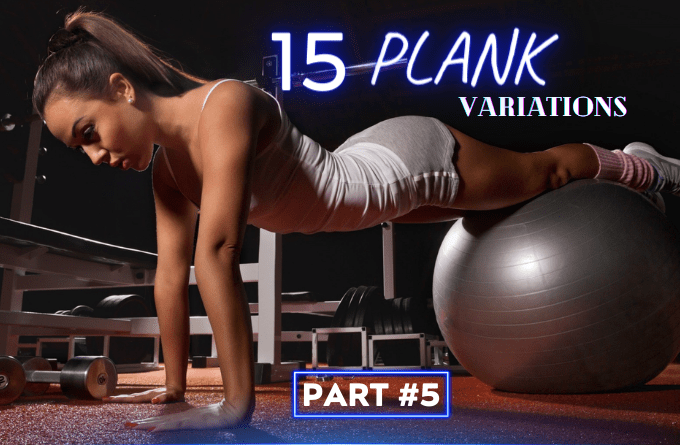
Table of Contents
ToggleReady for a more holistic workout experience? Explore these advanced plank variations that target multiple muscle groups, elevating your fitness routine to new heights.
Useful Information: Understanding Plank Variations
Plank variations cater to diverse fitness levels, ensuring everyone can benefit. Beginners find solace in knee planks, gradually progressing to forearm planks and beyond. Intermediate and advanced practitioners challenge themselves with straight-arm planks, side planks, and specialized versions, enriching their workout routines.
Ready to push your limits and take your planking skills to the next level? In this article, we’ll explore three advanced plank variations that challenge your strength, stability, and endurance.
7. Walking plank
Adding lateral movement to the plank engages multiple muscle groups, enhancing core strength, and improving overall stability.
Walking sideways with your plank will strengthen your core as well as your upper and lower body muscle groups. These include the deltoids, glutes, quads, hamstrings, and even calves.

Start in a full plank position with your hands directly under your shoulders. Activate your glutes and abs to prevent injury and gain maximum benefit.
Begin to shift laterally (to the side) by simultaneously moving your right hand and foot to the right.
Lift your left hand and foot to meet in the center and return to the plank position.
Complete 5 steps to the right and then 5 to the left for 1 set. Try to complete 3–5 sets, or as many as you can safely perform in 1 minute.
Pro tip: Take your time with this move to ensure proper form and to target your muscles effectively. Be sure to keep your core tight the entire time.
8. Plank with shoulder tap
This variation intensifies the traditional plank by incorporating balance and coordination, targeting various muscle groups, including the abs, back, and shoulders.
Planks with shoulder taps work several muscle groups, including your hip flexors, abs, back, glutes, hamstrings, and quads.
This move adds an extra challenge to the traditional straight-arm plank.

Start in a traditional straight-arm plank position. Widen your legs for more stability, if needed.
Keeping your core tight, lift your right hand off the floor and touch your left shoulder. Then, return your right hand to the floor.
Lift your left hand and touch your right shoulder.
Continue to alternate hands for 20–30 seconds.
Avoid rotating your shoulders or hips during this movement. The goal is to keep your body in a straight line.
Pro tip: If this is too difficult, start on your knees (straight-arm knee plank) or take a wider stance. To increase the difficulty, bring your feet together. This makes it harder to maintain stability.
9. Reverse plank
Positioning yourself with your stomach facing the ceiling engages the glutes, hamstrings, and shoulders, providing a comprehensive full-body workout.
This full-body exercise targets several muscle groups, including your glutes, hamstrings, abs, obliques, triceps, and shoulders. Instead of facing downward, you will position yourself with your stomach toward the ceiling.

Sit tall on the floor with your legs extended in front of you. Place your hands behind you on the floor, with your fingertips pointed toward your feet.
Engage your glutes, core, and arms to lift your hips, forming a straight line from heels to shoulders. Ensure that your shoulders are drawn down, away from your ears. Avoid dipping your hips by slightly tucking your pelvis.
Hold this for 20–30 seconds, or as long as you can while maintaining proper form.
Pro tip: If you want an even greater challenge, add a leg raise: While holding your reverse plank, bend at the hip and lift your right leg up toward the ceiling. Be sure to keep your hips stable and upper body strong while lifting. Return your leg to the floor with control and repeat with the other leg.
To make it easier, place your hands on an elevated surface such as a step or bench.
Incorporating these advanced plank variations into your fitness routine will challenge your body in new ways, enhancing overall strength, stability, and endurance.
In the forthcoming articles, we’ll explore more challenging plank variations to further intensify your core workout.
<<< Previously: Intermediate Plank Variations Explored
|Part #1 |Part #2 \Part #3 |Part #4 |Part #5
Next: Exploring Advanced Plank Variations >>>
Interesting Fact: The Plank’s Historical Evolution
The plank exercise, though widely popular today, has roots dating back centuries. Originating from yoga’s “Phalakasana,” this pose was primarily used for spiritual and mental focus. Over time, it transitioned into a staple fitness move, gaining prominence for its remarkable core-strengthening benefits.







